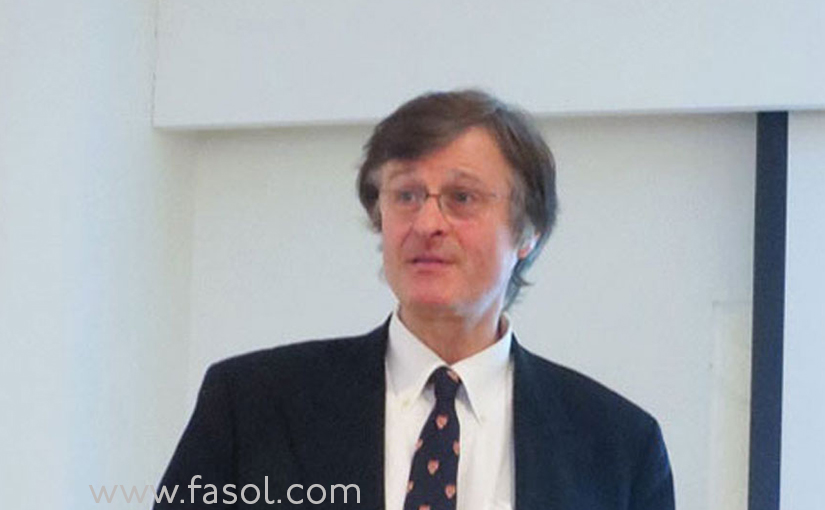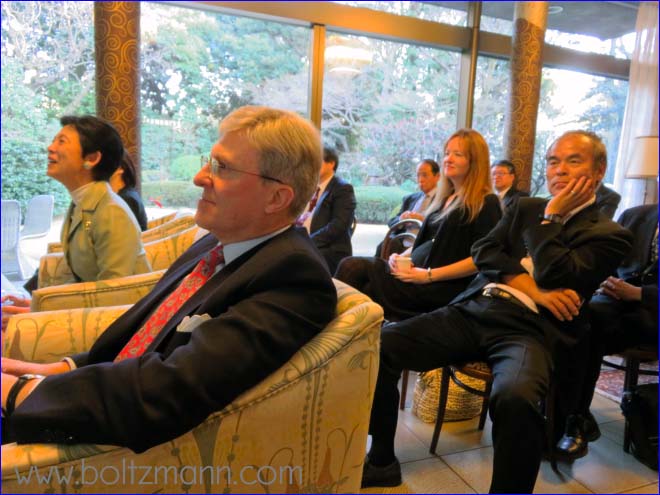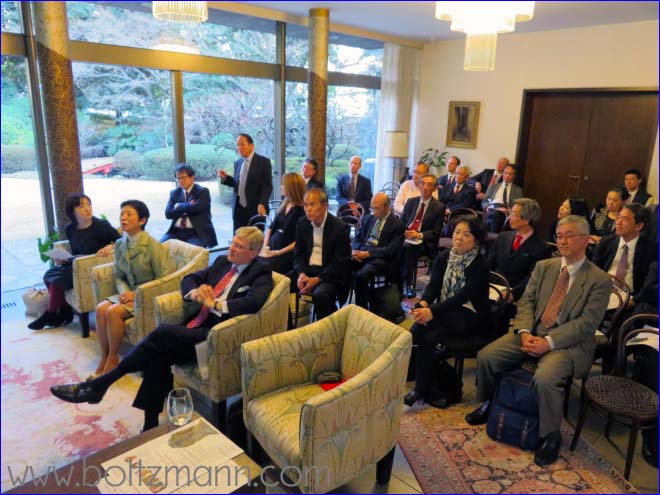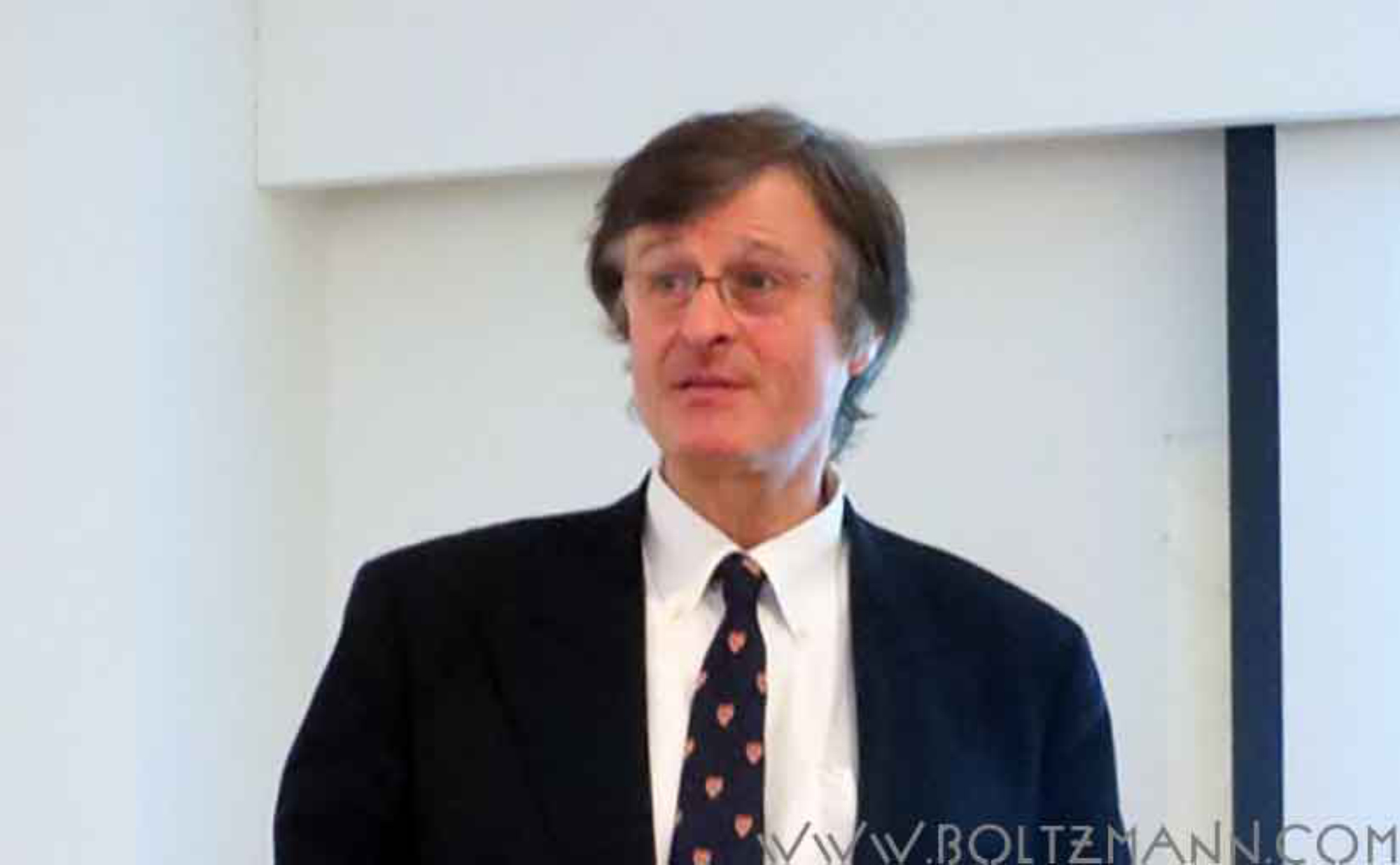Ludwig Boltzmann’s life – an overview
Gerhard Fasol
keynote talk given at the 8th Ludwig Boltzmann Forum at the Embassy of Austria, Tokyo, Thursday 18 February 2016
We use Ludwig Boltzmann’s results and tools every day

Ludwig Boltzmann was born 20 February 1844
We use Ludwig Boltzmann’s results every day. Among Ludwig Boltzmann’s results and tools:
- Unit of temperature, definition of Kelvin, Celsius directly linked to Boltzmann constant
- Stefan-Boltzmann radiation law
- S = k log W – linking macroscopic entropy to statistics of molecules. Also appears in information science.
- Maxwell-Boltzmann distribution law
- Boltzmann transport equations
- Philosophy of nature
- and much more
Ludwig Boltzmann was proposed several times for the Nobel Prize:
- 1903
- 1905
- three times in 1906
however Ludwig Boltzmann died on September 5, 1906, in Duino, Italy. On February 20, 2014, Ludwig Boltzmann’s 170th birthday, a commemorative plaque was unveiled in a ceremony in the building where he passed away, on the same day we held the 6th Ludwig Boltzmann Forum in Tokyo.
Ludwig Boltzmann’s life – an outline
Ludwig Boltzmann was born on 20 February 1844.
He graduated from High School, passing the Austrian High School examination “Matura” in 1863, at the age of 19 years.
Two years later, in 1865, Ludwig Boltzmann published his first scientific publication at the age of 21:
- “Über die Bewegung der Elektrizität in krummen Flächen” (Electricity on curved surfaces), Wien. Ber. 52, p214-221 (1865).
About 20% of Ludwig Boltzmann’s work was about electro-magnetism, Maxwell had developed the Maxwell’s equations just a few years earlier, 1861-1962. (In Japan’s context, Tokyo Dentou KK received the license to build the first electricity generation and distribution system in Tokyo on February 15, 1883, it was the time when electrical lighting was starting to replace gas lighting, and in parallel scientific work on electricity and magnetism advanced).
Ludwig Boltzmann built mechanical models to understand, visualize and teach Maxwell’s equations. These models have recently been rebuilt and can be seen for example at the University of Graz.
Ludwig Boltzmann’s teachers include:
- Josef Loschmidt:
- proposed structures for 300 chemical compounds, including benzene
- determined the number of gas molecules in a given volume
- the Loschmidt constant is named after Josef Loschmidt
- Jozef Stefan
- created the Stefan-Boltzmann Radiation Law together with Ludwig Boltzmann
- was the first to determine the temperature of the sun
Ludwig Boltzmann: timeline
- 1865, age 21: first publication: “Electricity on curved surfaces”
- 1867-1869, age 23-25: Privat-Dozent
- 1869, age 25: Full Professor in Graz “Mathematical Physics”
- 1873, age 29: Full Professor in Wien “Mathematics”
- 1875, age 31: declined offer of Professorship in Zurich and Freiburg
- 1876, age 32: marriage, Full Professor Graz, Head of Physics Institute
- 1887-1888, age 43-44: Rektor (President) University Graz
- 1888, age 44: March: offered Professorship in Berlin, June: declined Professorship
- 1890, age 46: Professor in München (students include the later First President of the University of Osaka, Hantaro)
- 1894, age 50: Professor in Wien
- 1900-1902, age 56-58: Professor of Theoretical Physics in Leipzig
- 1902, age 58: Professor in Wien
- September 5, 1906, age 62, died in Duino, Italy
Ludwig Boltzmann visited the USA three times:
- 1899
- 1904
- 1905
Ludwig Boltzmann’s support for women professionals and scientists
1872 Ludwig Boltzmann met Henriette von Aigentler. She was refused permission to unofficially audit lectures at Graz University.
Ludwig Boltzmann advised her to appeal, and in 1874 Henriette passes the exam as high-school teacher.
On July 17, 1876, Ludwig Boltzmann and Henriette von Aigentler marry. They have four children:
- 1880: Henriette
- 1881: Arthur Ludwig (my grand-father)
- 1891: Else
- 1884: Ida
Lise Meitner (Nov 1878 – 27 October 1968)
Ludwig Boltzmann’s student Lise Meitner was later part of the team that discovered nuclear fission, for which Otto Hahn was awarded the Nobel Prize.
Lise Meitner was the 2nd woman ever to earn a Doctorate in Physics from the University of Vienna.
Element 109 is named Meitnerium to honor Lise Meitner.
Nagaoka Hantaro, Ludwig Boltzmann’s pupil in München (1892-1893)
Nagaoka Hantaro (1865-1950) was Ludwig Boltzmann’s pupil in München around 1892-1893.
Nagaoka Hantaro was Professor at the University of Tokyo 1901-1925, and among his pupils was Hideki Yukawa.
1931-1934, Nagaoka Hantaro was the first President of the University of Osaka.
Ludwig Boltzmann as angel investor: supported aviation
Ludwig Boltzmann was a frequent traveler, usually by train, and to the USA by ship, so he understood the market for transportation, and supported several ventures to develop aircraft. He wrote an article “Über Luftschifffahrt” in 1894. He supported:
- Otto Lilienthal, Berlin
- Wilhelm Kreis, Wien
- Hiram S Maxim, an American engineer in the UK
Ludwig Boltzmann countered the view that engines heavier than air cannot fly, and argued for funding of applied research.
Ludwig Boltzmann traveled widely, was in intense scientific interaction with most major scientists of his time, both at conferences, as well as by exchanging letters.
Ludwig Boltzmann moved frequently between positions, motivated both by increased responsibilities, close interaction with colleagues, e.g. Ostwald in Leipzig, and also in the interest of increasing his income for the benefit of his family.
So much for a short overview of Ludwig Boltzmann’s life as an introduction to the 8th Ludwig Boltzmann Forum in Tokyo, to illustrate Ludwig Boltzmann’s wide range of interests, his frequent travels, and his actions beyond his fields of Physics, Philosophy and Mathematics.


Copyright (c) 2016 Eurotechnology Japan KK All Rights Reserved

Leave a Reply